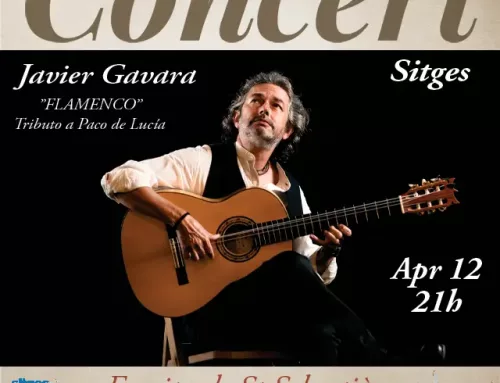The nights of February have always been busy in Sitges because the celebration of the carnival was tolerated by government authorities in the late Franco era. In one way or another, the people of Sitges began to celebrate what had been forbidden, calling it “Fiestas de Invierno” or dressing it in the glamor of the Rally of old cars, which was held precisely coinciding with Carnival Sunday during the sixties and well into the seventies.
A raid on “violets”
The presence of disguised characters, men disguised as women, women disguised as men, is a practice typical of all modern carnivals. In Sitges this fact is confirmed by the sensationalist but truthful news of a raid on “violets, police raid, which took place on Carnival Sunday in 1973 documented by various historians, such as Brice Chamoleou (2018) in the book entitled“ Tiran al fagot: the “queer” ghosts of democracy (1970-1988) ”:
During the Carnival of 1973, in Sitges, the civil guard observed at the entrance of the Los Tarantos nightclub several individuals “who, due to their ways of dressing and mannerisms, gave the impression of being effeminate.”
This episode was also picked up by Arturo Arnalte in the book “Redada de violetas: la represión de los homosexuales durante el franquismo” published by Esfera de los libros in 2003.
“La Calle del Pecado”
The presence of characters from the show business, “theatergoers”, film directors and folk singers, such as Antonio Amaya, gave way to a kind of nightclubs or societies where the rich and the poor mingled. The appearance of special bars caused a frivolous and distracted culture broth. Calle “dos de Mayo” became calle del pecado with the bar El Meson, with its “mesoneras” who were in charge of salting the Carnival that the Chilean artist Luis Poirot would photograph and the poet Enrique Lihn would call it The Ephemeral vulgata, a butterfly that flew at night:
In a neighborhood of Sydney, on the Rambla de Sitges
(when parents have picked up their children)
At midnight when Cinderella loses, mad and cunning
one of his little shoes in the hands of the twelve bells
in the Café de la Ópera, in the house of Carlina
and Christopher Street
the Ephemeral Vulgate wakes up for her nuptial flight
It unfolds, as on old postcards, its silk wings painted with sequins
The eyes are ocelli that glow at the touch of light and glow languidly.
“Oral memory of the gay community of Sitges”
Anyone who is unaware of the facts derived from the intention to create and promote a Gay Carnival in Sitges can find out by consulting the Immaterial Penedès website in its section “Oral memory of the gay community of Sitges”
The gay community, in one way or another, was part of the organizational fabric of the Sitges carnival but the prohibition and pressure of the regime made homosexuals integrate into the activities of each entity related to the carnival (Lacaba, 2004). In this sense, carnival becomes a transgressive and subversive element that questions the Catholic ideology of the regime, and gays, as representatives of this transgression, are included in the festivity (Lacaba, 2004).
Consequently, “the media representation that begins to have the carnival of Sitges to the outside, begins to have a certain gay color” (Lacaba, 2004: 118). This fact is combined with the emergence of new groups that collaborate with the carnival and generates a rivalry marked by a greater differentiation between the Sitges carnival and the gay carnival. A fact staged, above all, in the segregation of spaces and events that celebrated each part (Lacaba, 2004).
In addition, the City Council and the two organizing companies of the Sitges Carnival (Retiro and Prado) did everything possible from that moment so that the “official” carnival, the non-gay, had more representation and less connection with the community. gai (Lacaba, 2004). A fact that responds, according to Lacaba (2004), to two facts: the importance that the carnival had taken to the town and to the need of the political institutions to control and to make official this event to project a certain image of identity relevance with respect to political aims concrete (Lacaba, 2004: 118).
On the other hand, the different bodies dependent on the City Council also hindered the carrying out of activities related to the carnival and the gay community. Specifically, the party committee banned the owner of a gay venue – El Candil – from building a covered (tented) venue to perform street dancing in the event of rain (Lacaba, 2004). According to the author, this was a clear ban on the public demonstration of the gay carnival – celebrated from the dictator’s death until 1982 – for the benefit of the other carnival.
The ban was carried out after a vote between local authorities who finally considered the gay marquee unauthorized. According to Canet (2011) Convergència i Unió i Aliança Popular made a flag against the marquee alleging problems of public order and, due to the pre-election moment, no party wanted to play it, which led them to delegate the decision to the vote of the local entities (Prado and Retiro).
As a result, the two carnivals separated from the spaces where they took place, causing the gay carnival to take place in the denser streets of the local gay scene as we have seen above (Lacaba, 2004). This meant the relegation of the carnival to private spaces (bars on Carrer Sant Bonaventura and others), a logic close to laissez faire in private premises of the Franco regime.
The gay community of Sitges created its own circuits and its own dynamics such as organizing the previous week a tour of bars and discos where the night was themed, so “the night of the tourists” “The night of the Miriñaques” “La tarde de Putas” las Mesoneras (Fat Thursday), and other inventions that may be unknown to those who were not initiated into it.
The glitter and the “bale”, the feather and the sequin
Carnival is a private joke between friends and acquaintances. Carnival is also the competition between entities, the glitter and the “bale”, the feather and the sequin but also the improvised costume with grace. It is difficult to tell the story of a party that has never had a stable script, there are some patterns that, like everything that is traditional, move and vary, preserving some aspects and transforming others. Or even creating new mythologies, new icons, new characters of ephemeral life like the Sitges butterfly that take flight on the cold nights of each month of February, jumping from bar to bar and passing from one sidewalk to another without any mania.
Reinventing ourselves to die an Ash Wednesday
This year we are facing a great challenge, living the Carnival saving the pandemic, reinventing ourselves to die an Ash Wednesday, the screens and Social Networks will help us to pass this “impasse” until we can return to the streets again and in the squares to celebrate the happy Gay Carnival and feel the melancholy of the Joy that Passes.
Isidre Roset , president of the LGBTI Ass. Gay Sitges Link
Information sources:
Memòria oral de la comunitat gai de Sitges, Immaterial Penedès







